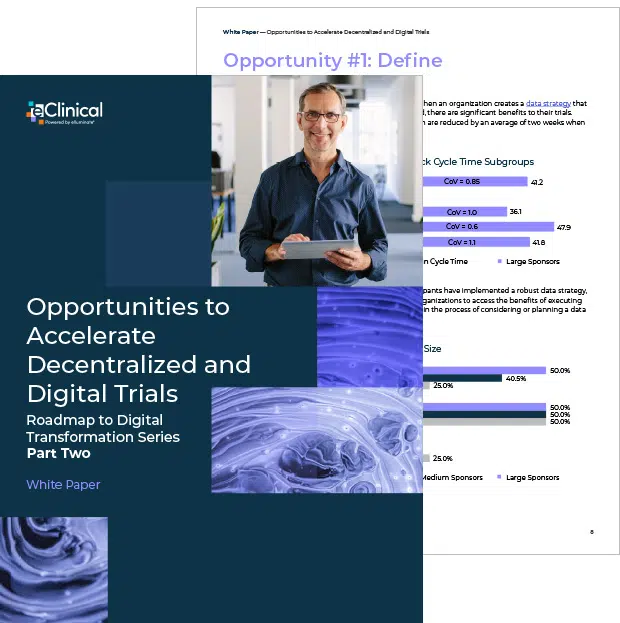
By submitting, you agree to the processing of your personal data by eClinical Solutions as described in our Privacy Policy.

Methods of “organizing” clinical data have not changed substantially over the past twenty-five years.
There are many challenges in bringing new drug therapies to market, but one of the most pressing is how life sciences organizations can rapidly harness, organize and analyze the increasing volume and variety of clinical data that are now available. This is clearly demonstrated in the fact that the amount of clinical data per trial has grown by 183 percent in the last decade.1
Clinical research hinges on high quality data, and the rate at which this data is expanding represents a larger trend in drug development. Life sciences companies are now managing studies that are more complex than ever before. Trials now have more than 70% of their data coming from outside of EDC systems including numerous types of labs, eCOA platforms, decentralized trial systems and numerous other clinical data sources. Adding to this complexity are the new types of data collected including longitudinal streams from wearables, along with biomarkers, omics, images and videos. There has been significant investment, enthusiasm and innovation around designing a better overall trial experience for both patients and sites in order to increase participation rates and ease of use while taking advantage of technical advances in both mobile computing and lightweight sensors.
In contrast, the process, tools and methods of “organizing” clinical data which include data ingestion, integration, standardization, review and analysis have not changed substantially over the past twenty-five years. As in many other industries, clinical development has spent more time focusing on its primary clients, patients and sites than their internal teams. Whether outsourced or insourced, every trial has teams of people responsible for setting up systems for data collection and then preparing, synthesizing, integrating, monitoring and analyzing data throughout the duration of the trial. Gaining a deeper understanding of the current state of data processing, review and insights activities and their impact on research was the goal of the Tufts-eClinical Study that surveyed 149 individuals in senior-level data management, data sciences, biostatistics, information technology and clinical research operations roles.
The study results demonstrate the need for investment in modern technology platforms to successfully handle the influx of new data streams available in research today, as well as those coming in the future. They also demonstrate the opportunity that exists to significantly improve business outcomes with high economic impact such as decreasing cycle time metrics and increasing analytics maturity to proactively manage risk. Results also highlight the opportunity that exists today to improve and transform user experiences for all the stakeholders in the clinical development process.
Take a deeper look into the current state of data processing, review, and analytics and their impact on the opportunities in clinical research to build an optimal infrastructure to accelerate decentralized and digital trials in this new white paper.
1 Getz, K, Anticipating the Impact of the Patient Engagement Movement on Clinical Operations, Presentation at CROWN conference, Slide #9, January 2020









